Revisit Victoria’s gold-rush days
With the launch of a historical TV drama set during the gold rush, it’s time to plan a visit to the region.
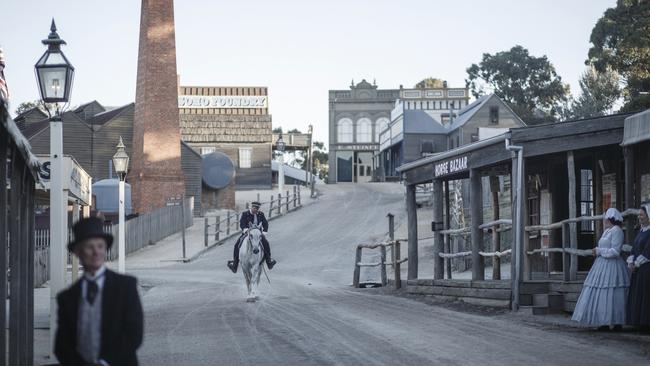
1 In the 1850s, Victoria produced more than a third of the world’s gold. The discovery of the precious metal funded the central Goldfields’ splendid architecture and other treasures now inspiring a UNESCO World Heritage bid. From Wednesday, SBS’s first historical drama series, New Gold Mountain, will delve into the blood, sweat and tears shed during that era. Not surprisingly, Sovereign Hill in Ballarat, 100km northwest of Melbourne, was a key filming location. This 15ha living museum has welcomed folks back to the golden age since 1970. It presents an immersive world of edutainment, from stage coaches thundering by to the steam-driven machines used to make their wheels, from red-coated troopers firing rifles to liquid gold’s transformation into solid ingots. Pan for shiny flecks, wander the Chinese camp, dress in period costume for photos taken the old-fashioned way – there’s more than enough for a day.

2 Ballarat’s Eureka Centre explores one of colonial Australia’s most notorious events, and its enduring legacy. In 1854, miners’ protests about expensive licences turned into a deadly battle at their hastily built stockade, under what’s now called the Eureka flag – the centre’s well-worn star attraction. Other artefacts include one of the controversial licences, but best of all is the audio-visual content that brings the words of Lieutenant-Governor Charles Hotham, miners’ leader Peter Lalor, and others, to life. The oldest object in the surrounding Eureka Stockade Memorial Park is an obelisk erected in 1884, roughly where the battle occurred. Heritage trees, a lake (originally a mining “sludge pond”), barbecues and a stockade-inspired playground make this a pleasant place to pause.
3 Blooming with native flowers in spring, Castlemaine Diggings National Heritage Park’s 7500ha patchwork once swarmed with thousands of miners who turned the ironbark forest into a moonscape. Their marks are everywhere, from a massive water wheel’s remnant stone buttresses, to a red rocky hill and cliffs revealed after prospectors washed away surrounding soil. Other highlights include Pennyweight Flat Cemetery, and the Chinese migrants’ flat market gardens, where vegetables still grow wild. Walk easy trails with interpretive signs, or hike the 210km Goldfields Track winding through Australia’s first national heritage park on its way from Ballarat to Bendigo. The best spot for picnics, barbecues and camping is Vaughan Mineral Springs, by the Loddon River.
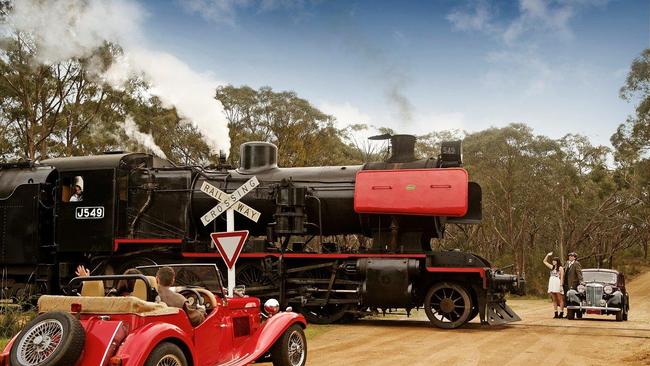
4 Belching steam, the venerable trains of the Victorian Goldfields Railway frequently chug-chug between handsome 19th-century stations at Castlemaine and Maldon. At the latter, passengers have more than two hours for lunch and exploration, but for many guests – especially those taking the ride-with-the-driver option – it’s about the journey rather than the destination. Heritage carriages feature compartments off long corridors, while first-class tickets provide access to bars with art nouveau wood panelling and iron lacework or art deco club-lounge elegance. These two premium carriages host special events such as Murder on the Orient Express evenings and Ales on Rails, which celebrates regional beers and includes a Maldon pub lunch. More events will be announced as restrictions ease.
5 Bendigo is rivalled only by Ballarat for 19th-century boomtown architecture and tales. Bone up on a Bendigo Walking Tours stroll around the city. The founders and guides are personally linked to Goldfields history: Peter’s great-grandfather was born in a tent on the Bendigo diggings, and Jill’s ancestors were Ballarat miners during the Eureka rebellion. They point out heritage buildings such as the Hotel Shamrock and Australia’s first purpose-built mining exchange, and reveal notable people and events. Considering the gold rush’s wild west reputation, the tour is remarkably G-rated. It emphasises Bendigo’s progressive achievements: a female-suffrage rally way back in 1853, for example, and a town planner’s defiant insistence on public spaces.
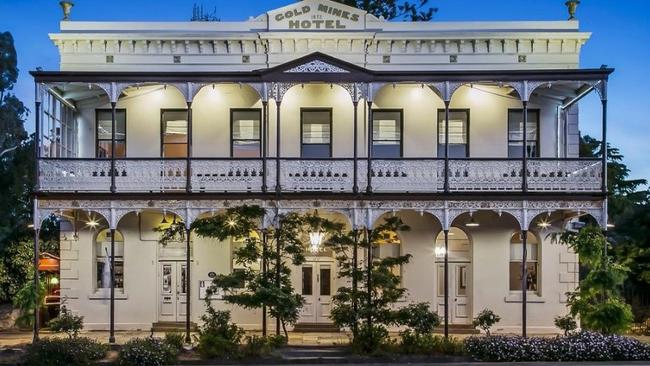
6 Gold Mines Hotel was opened in 1872 by a future Bendigo mayor who made his fortune across the street at Victoria Hill mine. This elegant two-storey Victorian overlooks a mining heritage reserve, and was recently revived as a smart-casual dining destination. From bread to ice cream, everything is made in-house using predominantly regional ingredients and herbs from the garden. Dishes such as wood-grilled lamb with saffron-spiced couscous are served with drinks that also highlight local producers. Original features, including a cedar bar and marble fireplaces, rest easy with contemporary art and decor. A casual indoor-outdoor area leads to the extensive rear garden, where spring’s pear blossoms compete with purple wisteria tumbling from the front balcony’s iron lacework.
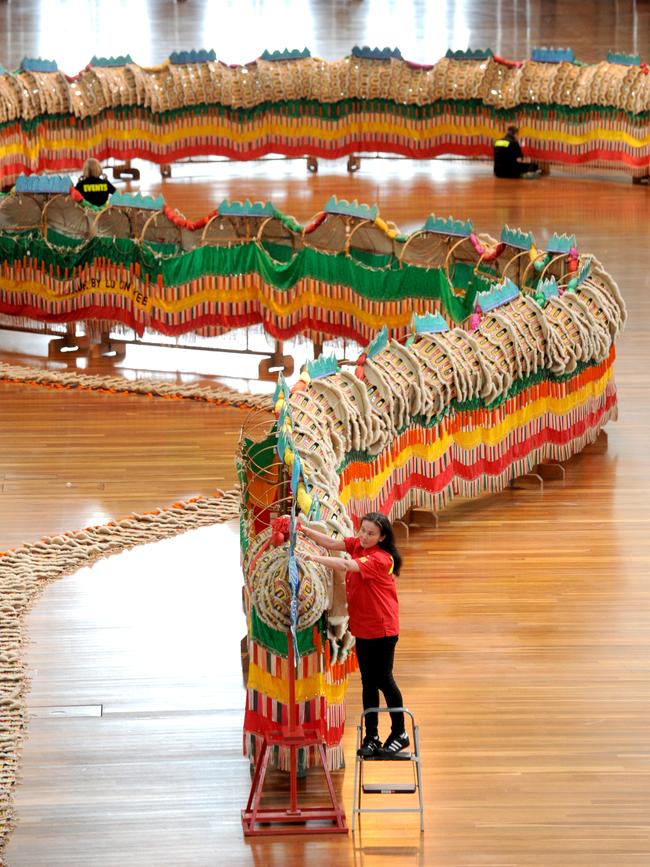
7 The Golden Dragon Museum showcases the significant Chinese heritage of Bendigo, dubbed Dai Gum San, or Big Gold Mountain, by miners from what is now Guangdong province. It’s also the name of the museum precinct, which includes a temple (re-opening this month after renovations) and a traditional covered bridge crossing a lake populated by enormous goldfish. The gardens feature several pomelo trees, the favourite “food” of the museum’s processional dragons. Pomelo leaves dangle from the gaping mouths of these extraordinarily long, fabulously decorated creations, including what’s believed to be the world’s oldest. They appear alongside the museum’s more sobering exhibits, including evidence of systemic racism experienced by 19th-century Chinese migrants.
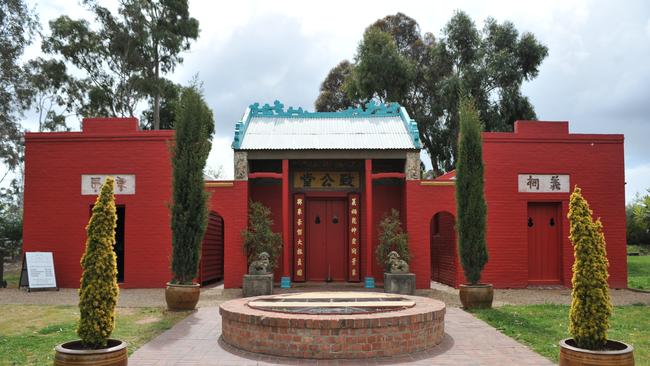
8 Expected to re-open late this month, Bendigo Joss House Temple turned 150 this year. A modest brick building boldly painted red for luck, it’s the only remnant of the large Ironbark Chinese Camp, whose residents dedicated the temple to Guan-Di, god of war and prosperity. He’s still attracting worshippers, so the altar’s incense and offerings of fruit and even roast chickens aren’t for show. Among more permanent items, some on loan from the Golden Dragon Museum, are sacred metal vessels and colourful textiles, including flags and altar cloths. The only objects original to the temple, which was derelict by the 1930s, are a few of the hundreds of ancestral tablets that once stood here.
9 Closed in 1954, Central Deborah Gold Mine operated in the final years of Victoria’s golden century. The 22m poppet head, used to winch workers, tools and ore to and from the surface, is visible from central Bendigo. It offers views across the city, while the associated winding engine is among the often impressively noisy equipment drawn from various disused facilities. The buildings, including a blacksmith’s shop, are original to the mine, which descends 412m. Tours take visitors 61m below ground. It’s enough – especially when a rock drill fires up – to understand the difficult conditions for miners chasing subterranean reef gold after surface pickings petered out.
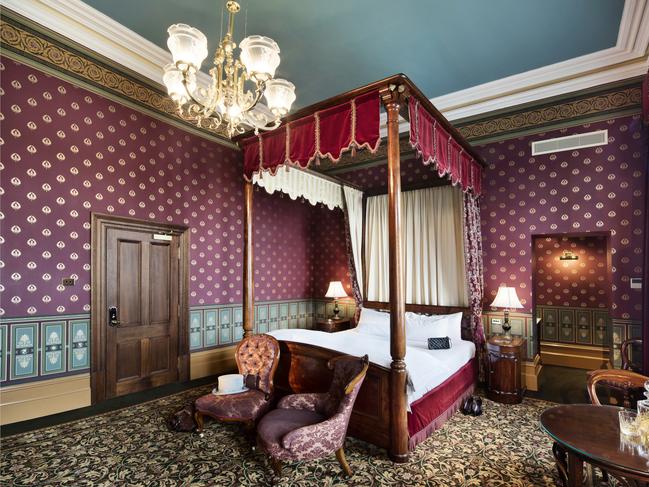
10BEST BEDS
Opened in 1862, Craig’s Royal Hotel is a gold rush grande dame that hosted the likes of Prince Alfred, Mark Twain and, surprisingly, Confederate States Navy officers during its heyday. Memorabilia of these and later guests, including Nellie Melba, who sang from a balcony in 1908, is part of its nostalgic appeal. Chandeliers, wallpapers, fabrics and plasterwork in high-Victorian style catch the eye, especially during the Grand Dining Room’s Sunday high tea. Finest among the 41 guestrooms are three Royal Suites, featuring antique furniture and marble bathrooms. Request room 201 below the main corner tower. Views from the balcony take in the fancy 1875 facade of Her Majesty’s Theatre opposite and the distant Pyrenees mountains. Double rooms $175 a night; Royal Suite $355 a night.
Please note some attractions are subject to Covid restrictions.




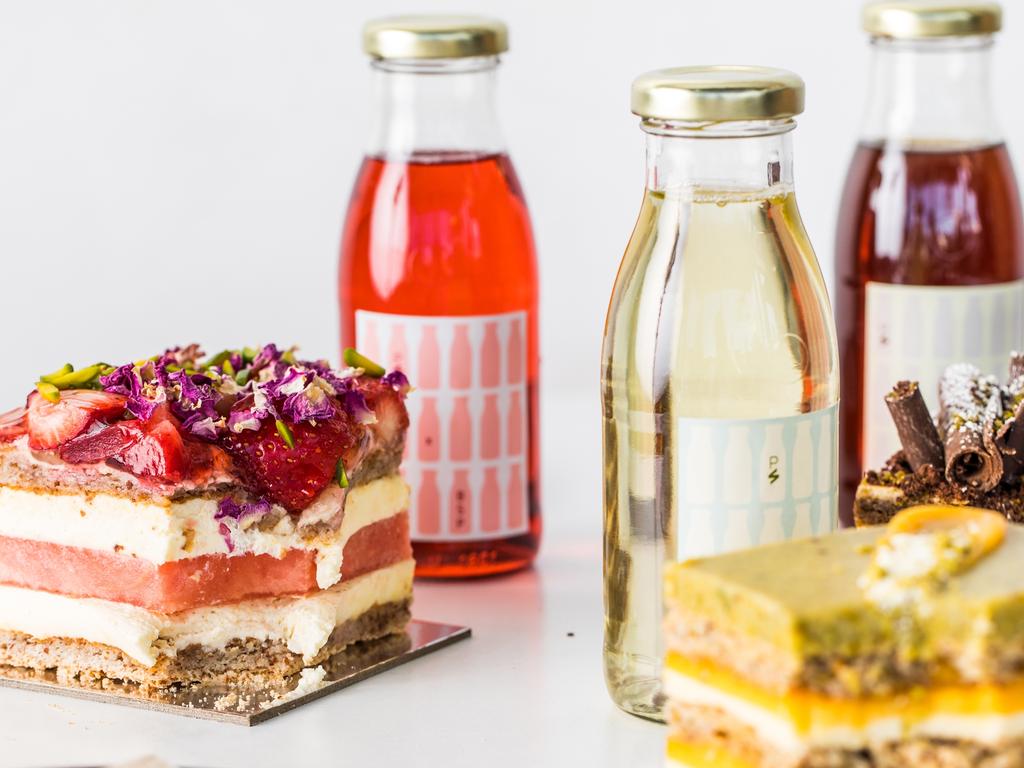
To join the conversation, please log in. Don't have an account? Register
Join the conversation, you are commenting as Logout